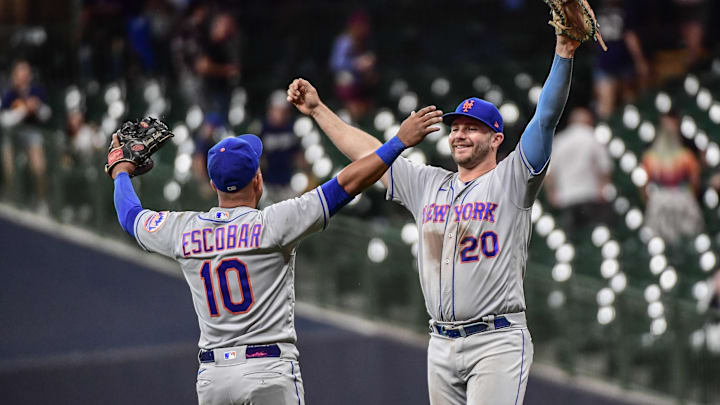5) NY Mets wild card: Eduardo Escobar’s bat
The position player version of Carlos Carrasco might be Eduardo Escobar. Year one wasn’t great in New York. Escobar batted .240/.295/.430 and didn’t get real good until the final month of the season. Momentum doesn’t usually carry over through an entire offseason. However, he could build some confidence and get him back to where he has been in recent seasons.
Escobar wasn’t a complete bust of an addition by the Mets. He did hit 20 home runs. His batting average, OBP, and slugging percentages weren’t too far off from his career numbers. Escobar may have been outshining his own abilities in some of his recent campaigns. Most notably, his monster 2019 season that included 35 home runs and 118 RBI appears to be a major outlier in his career.
The Mets could use a slight uptick in performance from Escobar. Exactly what he produced in 2021 would be more than welcomed. Escobar batted .253/.314/.472 with 28 home runs and 90 RBI for the Arizona Diamondbacks and Milwaukee Brewers. Having that kind of power in the middle of the lineup would make a major difference.
A slow start from Escobar could quickly become a call to promote Brett Baty for the starting third base gig. Equally as possible, Escobar starts strong and becomes one of the more relied upon bats in the order. Either feels realistic. Which do the Mets get?
